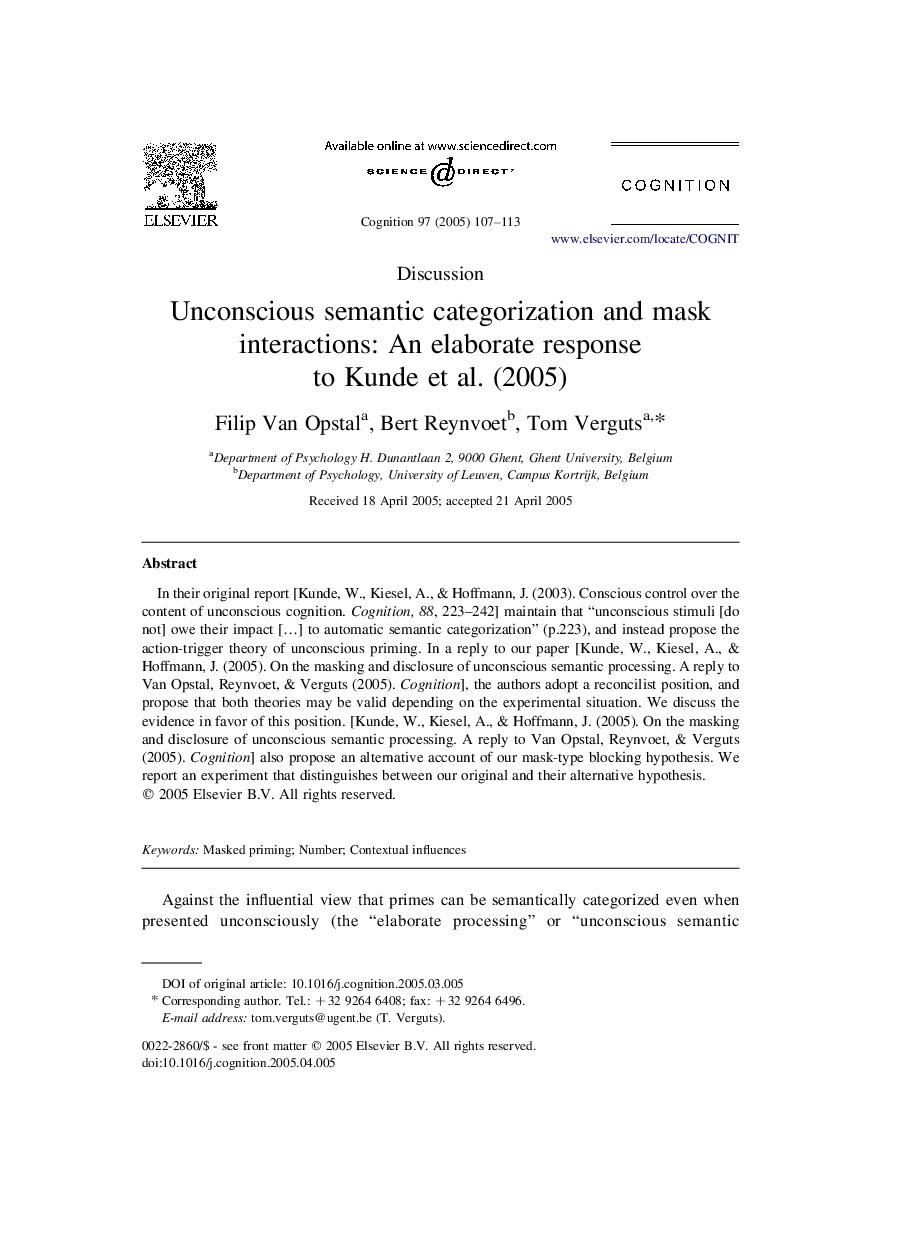| Article ID | Journal | Published Year | Pages | File Type |
|---|---|---|---|---|
| 10458119 | Cognition | 2005 | 7 Pages |
Abstract
In their original report [Kunde, W., Kiesel, A., & Hoffmann, J. (2003). Conscious control over the content of unconscious cognition. Cognition, 88, 223-242] maintain that “unconscious stimuli [do not] owe their impact [â¦] to automatic semantic categorization” (p.223), and instead propose the action-trigger theory of unconscious priming. In a reply to our paper [Kunde, W., Kiesel, A., & Hoffmann, J. (2005). On the masking and disclosure of unconscious semantic processing. A reply to Van Opstal, Reynvoet, & Verguts (2005). Cognition], the authors adopt a reconcilist position, and propose that both theories may be valid depending on the experimental situation. We discuss the evidence in favor of this position. [Kunde, W., Kiesel, A., & Hoffmann, J. (2005). On the masking and disclosure of unconscious semantic processing. A reply to Van Opstal, Reynvoet, & Verguts (2005). Cognition] also propose an alternative account of our mask-type blocking hypothesis. We report an experiment that distinguishes between our original and their alternative hypothesis.
Related Topics
Life Sciences
Neuroscience
Cognitive Neuroscience
Authors
Filip Van Opstal, Bert Reynvoet, Tom Verguts,
